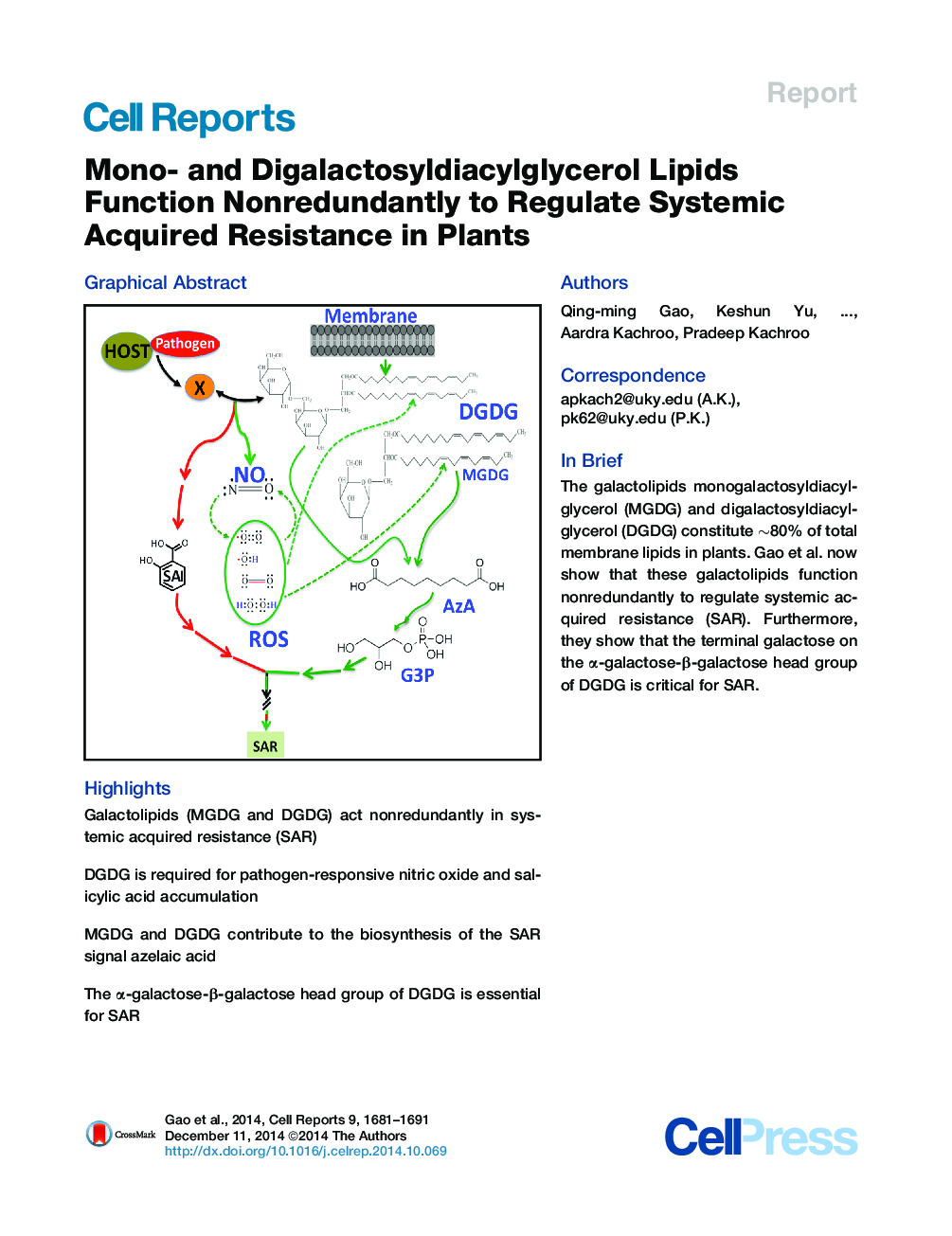| کد مقاله | کد نشریه | سال انتشار | مقاله انگلیسی | نسخه تمام متن |
|---|---|---|---|---|
| 2042140 | 1073187 | 2014 | 11 صفحه PDF | دانلود رایگان |

• Galactolipids (MGDG and DGDG) act nonredundantly in systemic acquired resistance (SAR)
• DGDG is required for pathogen-responsive nitric oxide and salicylic acid accumulation
• MGDG and DGDG contribute to the biosynthesis of the SAR signal azelaic acid
• The α-galactose-β-galactose head group of DGDG is essential for SAR
SummaryThe plant galactolipids monogalactosyldiacylglycerol (MGDG) and digalactosyldiacylglycerol (DGDG) have been linked to the anti-inflammatory and cancer benefits of a green leafy vegetable diet in humans due to their ability to regulate the levels of free radicals like nitric oxide (NO). Here, we show that DGDG contributes to plant NO as well as salicylic acid biosynthesis and is required for the induction of systemic acquired resistance (SAR). In contrast, MGDG regulates the biosynthesis of the SAR signals azelaic acid (AzA) and glycerol-3-phosphate (G3P) that function downstream of NO. Interestingly, DGDG is also required for AzA-induced SAR, but MGDG is not. Notably, transgenic expression of a bacterial glucosyltransferase is unable to restore SAR in dgd1 plants even though it does rescue their morphological and fatty acid phenotypes. These results suggest that MGDG and DGDG are required at distinct steps and function exclusively in their individual roles during the induction of SAR.
Graphical AbstractFigure optionsDownload as PowerPoint slide
Journal: - Volume 9, Issue 5, 11 December 2014, Pages 1681–1691